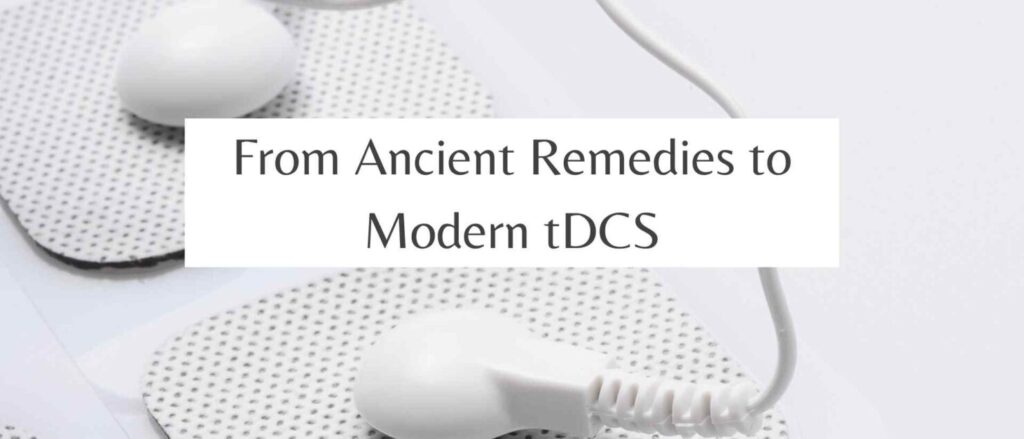
Pharmacotherapy and psychotherapeutic interventions have been prominent for the last few decades in the treatment of mental health disorders and neurological diseases. Brain and behaviour studies have been working for years to maximize the functioning of neural systems and their connection to regulate cognition, emotions and actions.
Introduction
The emerging evidence mostly indicated the improvement in attempting to cure illnesses such as major depression and schizophrenia but now the unaddressed gaps towards innovative approaches to provide clinical support with minimal side effects have received attention. For this purpose, Transcranial Direct Current Stimulation (tDCS) is one of the newly acknowledged methods in the field of therapeutic management.
So, The Question Is What Is tDCS Therapy?
This therapy consists of providing stimulation to the brain through certain devices. The stimulation contains a current of weak intensity about 1-2mA and it passes across the cortex with the help of at least two electrodes. The method was developed during the 1960s and its history dates back to even earlier than its discovery. Now, this is used as a tool to modulate the overall brain functioning.
The Remarkable Events So Far Highlighting The tDCS Evolution
This therapy has evolved over the last few years dramatically. The first mark of the tDCS started during the Roman Empire. Those were the times when physicians such as Mr Largus suggested the placing of live torpedo fish over the scalp for headache management. It was the era of Nero Caesar as Emperor Tiberius Claudius. The electricity of the fish healed the first person when Anthero, a freed slave of the Emperor suffered from gout disease. Next, in Persia, a Muslim physician named Ibn-Sidah recommended this treatment method in the 11th century. He demonstrated the epilepsy cure by placing the live catfish on the brows of the patients. The relief through this fish was associated with the devil’s removal from the human body. Interestingly electricity present among fish has been a famous direct stimulation method for ten centuries. The question in history was how experts can measure the change.

Moving forward, in 1660 another German scientist invented a machine to offer stimulation. An Italian anatomist used to stimulate sheep and frogs to test the outcome in 1756. From the 1760s to the 1960s, many other people have tried the effects of neuromodulation in one way or another. History has milestones where electrostatic generators were developed by experimenters for the same purpose even Benjamin Franklin is one of those who was exposed to electrification with generators. The forms the shocks took in the historical evidence and archives were quite reformed in the present modern world. Many Neurophysiologists were trying the live fish with generators for the production of electricity to boost brain functioning. The creation of a dipole field around human bodies discharged 1Hz to 65 Hz of indirect current in a single cycle so far. On record Middlesex Hospital in England was the first hospital facility that purchased a stimulation device for the patients in 1977.
Taking the birth of the generator ahead, the electric charge did not vary using this device. Then the devices were modified with the help of ancient Persian Civilization using a Baghdad battery. Suddenly in the 20th century, the invention of a device for medical purposes in Iraq was discovered by an archaeologist who took it to a farmer suffering from major depression referred to as melancholy madness. When this clinical treatment provided an improved mood completely owned by Santa Orsola Hospital in Bologna city of Italy.
The Present Situation
After exchanging from country to country by many sources, the simple galvanic battery stayed in the transcranial DC stimulators. The vacuum tubes and transistors changed into microprocessors and microcontrollers. The work of biomedical engineers considered low-cost products but with reduced battery issues and psychiatrists began to represent it for cortical, sensorimotor and cognitive functioning. In 2024 since 2000 healthy humans have trusted these devices for neurological function enhancement and have communicated about these products as miracle devices. There are multiple benefits. Some of them are listed below:
- Improves responsiveness to speech therapy
- Boost functioning of occupation therapy
- Manage neuropathic pain
- Reduce the perception of illness
- Deal with conditions like fibromyalgia
- Several mental disorders and neurological symptoms are managed
There are several devices available in the market that are portable and not only safe and easy to use but rather affordable.
Leading Devices
As a neuromodulator device, the tDCS favours the reduction in depression similar to taking antidepressants and has the full potential to enable human beings to progress their mental health outcomes with various diagnosed and co-occurring medical conditions.
Examples of such devices are made in the United Kingdom by a National Health Service (NHS) approved company known as “UK tCDS Devices”. The range of their neuromodulation devices is vast and their utility is vast. The renowned device called “FLOW” stands out for the blend of effectiveness and flexibility when it comes to shifting positions of the device for better use. The shape of flow is like a headband, keeping extreme comfort and aesthetics in mind. With high-quality material, the device is durable and used for 30-minute sessions each to improve mental health and overall wellbeing.

Another device is named a “Brain Driver”. This is even a reliable and low-cost option to give access to the audience for delivering preferred output. The V2.1 model is an excellent package with sponges, electrodes and headbands. The aim is to build a user-friendly device to improve mood and attract tech-savvy users. Other than cognitive functioning, these devices also target sleep, overall performance and pain management. Likewise “NuroMyst” is a groundbreaking device with app control. There are personalized and customized recommendations that users of this device may seek whenever they want.
Why Is It unique?
The impact of using this therapy may be limited to sensations like itching, burning and headache that stay milder and for a short period. These effects are quite low as compared to Transcranial Magnetic Stimulation (TMS) and Transcranial Alternating Current Stimulation (tACS). Recently the Fisher Wallace device from the same company is introduced. This brand collaborated with Dr. Maurizio Fava from the Harvard Medical School of Psychiatry. The designed clinical trials with hundreds of subjects illustrated the advantages of tDCS. Especially it is more efficient as compared to traditional approaches i.e. tACS concerning the variable frequency of current transfer because the same level of electrical stimulation was one of the major hindrances in maximizing the brain oscillations and speeding up the neuroplasticity among the neurons. The input it offers in the neuronal activity and implications for diverse healthcare settings is limitless.
Conclusion
This form of therapy is a blessing for a large number of populations around the globe. The tDCS devices are FDA-approved and they have many options to choose from based on the individual requirements. The Journal of Psychiatry published the latest news of successful trials in Massachusetts. The devices are indeed supplying health and overweight the benefits than loss. This is not only a profitable investment for the effortless management of medical and psychiatric syndromes. As time passes, the clinical experts, patients, students and medical trainers in the allied health sciences must integrate the application of these devices in research, practice and the teaching-learning process.
—
References:
Chase, H. W., Boudewyn, M. A., Carter, C. S., & Phillips, M. L. (2019). Transcranial direct current stimulation: a roadmap for research, from mechanism of action to clinical implementation. Molecular Psychiatry, 25(2), 397–407. https://doi.org/10.1038/s41380-019-0499-9
Sarmiento, C. I., San-Juan, D., & Prasath, V. B. S. (2016). Letter to the Editor: Brief history of transcranial direct current stimulation (tDCS): from electric fishes to microcontrollers. Psychological Medicine, 46(15), 3259–3261. https://doi.org/10.1017/s0033291716001926
Thair, H., Holloway, A. L., Newport, R., & Smith, A. D. (2017). Transcranial Direct Current Stimulation (TDCS): A beginner’s guide for design and implementation. Frontiers in Neuroscience, 11. https://doi.org/10.3389/fnins.2017.00641
